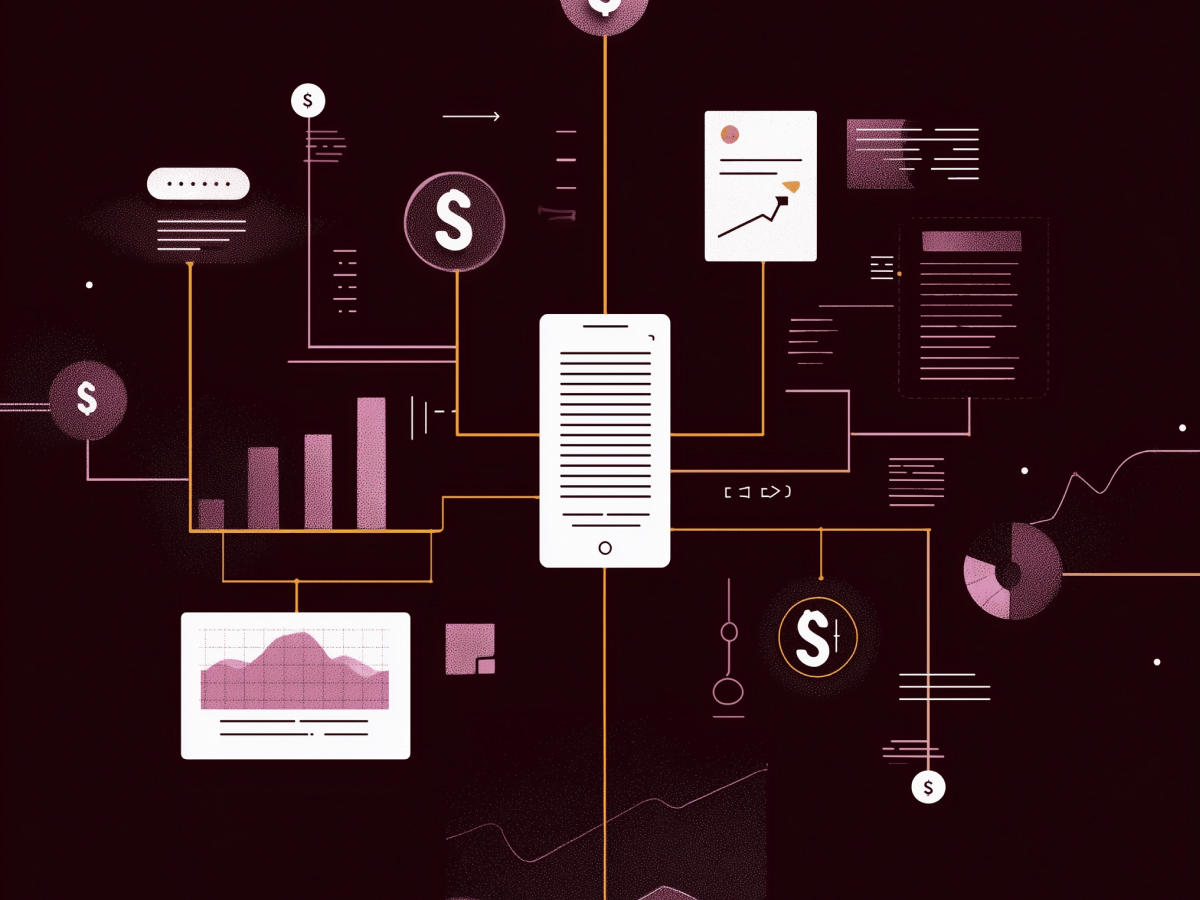Why legacy software becomes unmanageable
Software doesn’t age gracefully. Over time, what starts as a simple, functional system grows into a tangled web of complexity. Companies scale, requirements shift, and suddenly you’re dealing with millions of lines of code, often written by people who left the company years ago. This isn’t just an inconvenience; it’s a serious drag on innovation and growth.
Legacy systems become unmanageable because they weren’t built with the future in mind. They evolve reactively, not strategically. Small, quick fixes accumulate, creating technical debt, a concept where short-term solutions come at the expense of long-term efficiency. Eventually, the system becomes so fragile that even minor updates risk breaking critical functions.
“Without a solid architectural foundation and regular refactoring, software turns into an expensive, inefficient mess that slows down business agility and burns through resources.”
Smart companies know that modernization is a business imperative. The question is, how much longer can your business afford to run on software that’s holding you back?
The risks of software built by inexperienced developers
Everyone loves a good underdog story, someone who hacks together an app in their garage and turns it into a billion-dollar business. But here’s the reality: when software is built by someone without deep technical expertise, it eventually runs into serious problems. And by the time those problems surface, they’re costly to fix.
A common scenario? A well-meaning but inexperienced developer, maybe a relative or an enthusiastic employee, creates an internal tool to solve an immediate problem. It works, and it grows. Over time, more features are added, and before long, the entire business relies on it. But under the hood, the system lacks scalability, security, and maintainability. What was once a quick solution becomes a long-term liability.
Scalability matters. If software can’t handle increased demand, it slows operations and frustrates customers. Security is non-negotiable, especially when dealing with sensitive business data. And maintainability is the key to keeping things running smoothly as your team and operations evolve.
The lesson here is clear: short-term savings by cutting corners on software development often result in long-term costs. Investing in experienced developers and proper architecture from day one pays off in ways that aren’t always immediately visible but become critical as your business grows.
How founders and early developers create technical debt
Startups move fast. Founders and early developers are focused on getting things done, shipping features, winning customers, and staying ahead of the competition. The problem? In the rush to build, technical debt often piles up, hidden beneath the surface until it’s too big to ignore.
Technical debt is like financial debt. If you borrow a little now to move faster, that’s fine, if you have a plan to pay it back. But if you keep borrowing without a strategy to fix things later, you’re setting yourself up for failure. Many founders unknowingly create this scenario by writing code that “just works” without thinking about long-term scalability, documentation, or code quality. And because they’re often the company’s visionaries, their code goes unquestioned, until it starts causing serious inefficiencies.
The impact? Slower development cycles, higher maintenance costs, and frustrated teams struggling to understand and work around outdated code structures. What’s worse, key business functions can become dependent on poorly written code, making system overhauls risky and expensive.
The takeaway? Fast growth is great, but not at the expense of long-term sustainability. Technical debt is inevitable in any growing business, but managing it proactively is what separates companies that scale successfully from those that get stuck in a cycle of inefficiency and frustration.
The high cost of a “fix it later” mentality
Speed matters in business. But when it comes to software, cutting corners in development to meet deadlines often leads to long-term headaches. Many teams adopt a “fix it later” mindset, delivering features quickly with the promise of cleaning things up afterward. The problem? Later rarely comes, and the technical debt continues to pile up.
When software is built in a rush, it often lacks the proper structure, documentation, and testing required to ensure long-term stability. Instead of building a solid foundation, teams patch things together to keep up with demands, resulting in systems that become harder, and more expensive, to maintain over time.
It’s easy to justify quick wins in the moment. After all, getting features out the door faster helps drive growth and keep customers happy. But eventually, the cracks start showing, bugs become harder to fix, new features take longer to develop, and performance issues creep in. Businesses end up spending more time fighting fires than innovating.
The smartest companies balance speed with sustainability. They recognize that software isn’t just about delivering features but about making sure those features work reliably and can evolve without breaking down. Investing in quality from the start might slow things down slightly today, but it prevents costly overhauls and lost opportunities tomorrow.
Why business-driven timelines often overlook software quality
Business leaders love ambitious goals and rightfully so. But when software deadlines are set by people who don’t fully understand the complexity of development, it often leads to compromises that hurt the business in the long run. Telling a development team to “just get it done” without considering technical realities results in rushed work, increased technical debt, and ultimately, lower product quality.
Software development isn’t just about writing code; it’s about building something that can scale, perform, and adapt to changing needs. When management sets unrealistic deadlines without involving technical teams in the planning process, they inadvertently create conditions where corners get cut, skipping proper testing, documentation, and architectural decisions that ensure long-term success.
Misalignment between business goals and technical feasibility can lead to frustration on both sides. Developers feel pressured to deliver incomplete or inefficient solutions, while executives see a product that doesn’t meet expectations. Worse, the resulting software is often fragile and difficult to maintain, leading to higher costs down the line.
The solution? Collaboration. Business leaders should work closely with technical teams to set realistic goals that balance speed and quality. A well-planned roadmap that factors in both immediate business needs and long-term sustainability makes sure that the product delivers value without creating costly problems down the road.
The long-term impact of poor foundational decisions
Every great structure starts with a solid foundation, and software is no different. Poor decisions made early in development can lock businesses into inflexible, inefficient systems that hinder growth and innovation for years. Whether it’s choosing the wrong technology stack, designing for the wrong use case, or prioritizing speed over scalability, these choices create challenges that are difficult and expensive to reverse.
One of the biggest mistakes companies make is underestimating the importance of flexibility. Early architectural choices should allow for evolution and scalability. The concept of “high-optionality software development” emphasizes keeping doors open, designing systems that can adapt to change rather than boxing teams into rigid structures. Without this mindset, businesses find themselves trapped, unable to pivot when the market demands it.
“Initial shortcuts can work for a while, but over time, they lead to performance bottlenecks, security vulnerabilities, and integration challenges.”
The lesson here is simple: Don’t cut corners when making foundational decisions. Investing time in designing a scalable, well-structured system today saves countless hours and dollars in the future. The best companies build for the long haul, ensuring their software can support growth, change, and innovation without painful rewrites.
The danger of hero developers and their hidden costs
Every business loves a hero, someone who steps in at the last minute, solves a key problem, and saves the day. In software development, these “hero developers” often deliver impressive results under tight deadlines. But here’s the catch: their code is usually built in isolation, using unique approaches that no one else understands. Once they leave, the company is left with a black box that no one can maintain or improve.
Hero-driven development creates a dangerous dependency. When one person becomes the go-to problem solver, it discourages collaboration and knowledge sharing within the team. This not only limits innovation but also puts the entire business at risk when that individual moves on. Critical features, built without proper documentation or adherence to coding standards, turn into long-term liabilities.
The problem isn’t the hero, it’s the system that allows them to thrive in isolation. Great companies build a culture of teamwork, where no single individual holds the keys to vital software components. Encouraging best practices like code reviews, collaborative development, and proper documentation makes sure that knowledge is distributed and no one developer becomes irreplaceable.
At the end of the day, businesses succeed through scalable, sustainable processes, not heroic efforts. Building a resilient team, rather than relying on lone problem-solvers, is the key to long-term growth and stability.
The pitfalls of quick-fix software tools and prototypes
Speed is exciting. In the past, companies jumped on trends like Rapid Application Development (RAD) and Computer-Aided Software Engineering (CASE) tools to build prototypes quickly and meet immediate business needs. More recently, the rise of low-code and no-code platforms promises even faster results. But the truth is, what starts as a quick solution often ends up becoming the backbone of a company’s operations, without ever being properly designed for long-term success.
The problem is that many of these tools prioritize ease of use over scalability and maintainability. They allow businesses to quickly prototype and deploy solutions, but these systems often lack the flexibility and robustness needed for enterprise-grade operations. When the company grows and new demands arise, these quick-fix solutions become obstacles rather than assets.
One of the biggest mistakes businesses make is assuming that a working prototype is the same as a production-ready system. A prototype is meant to test ideas, not serve as the final product. Shipping it without rethinking its architecture leads to inefficiencies, security vulnerabilities, and an inability to scale when demand increases.
The right approach is to view these tools as stepping stones—great for rapid testing and iteration, but not a substitute for well-architected, maintainable software. Businesses that invest in proper development after validating their ideas set themselves up for long-term success without the pain of constantly patching short-term fixes.
Why software complexity increases over time
No matter how well-designed your software is today, complexity will creep in over time. It’s inevitable. Businesses grow, markets change, and what once seemed like a clean, efficient system gradually becomes harder to manage. The key isn’t to fight this reality but to embrace it and have a plan to manage complexity before it overwhelms you.
As software evolves, new features, integrations, and patches get layered onto the existing codebase. Over time, what started as a simple solution turns into a complicated maze of dependencies and workarounds. The more layers you add, the harder it becomes to make changes without unintended side effects. This complexity slows development, increases costs, and makes it harder to onboard new team members.
But complexity isn’t the enemy, stagnation is. The best companies tackle this challenge by continuously refactoring their code, removing outdated components, and adopting modern practices that keep their systems adaptable. Regular code reviews, documentation updates, and strategic technical debt management help maintain agility even as complexity grows.
The reality is, every piece of software will eventually feel outdated to the next generation of developers. But businesses that invest in proactive maintenance, modular architectures, and scalable design principles can extend the lifespan of their software and stay ahead of the curve.
Key takeaways
- Managing software complexity: Legacy software systems become unmanageable due to rushed development, poor early decisions, and evolving business needs. Leaders should prioritize regular system reviews and refactoring to prevent escalating technical debt. Software built by inexperienced developers can hinder scalability and security. Businesses must invest in experienced teams and scalable architectures from the outset to avoid costly overhauls later.
- Balancing speed and quality: A “fix it later” mentality often leads to long-term inefficiencies and higher costs. Decision-makers should balance speed with sustainable development practices to ensure long-term product stability and performance. Unrealistic management-imposed deadlines can force teams to cut corners, resulting in poor software quality. Aligning business goals with technical feasibility through cross-functional collaboration is essential to achieving sustainable growth.
- Strategic software development: Poor foundational decisions lock companies into inefficient systems. Leaders should prioritize flexibility in software design to allow for future scalability and evolving business needs. Over-reliance on individual hero developers creates long-term risks. Encouraging knowledge sharing and standardization within teams can help mitigate dependency on key individuals.





